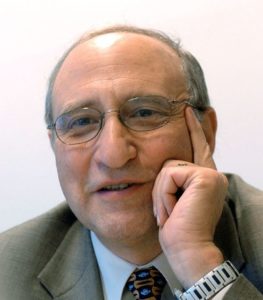Donald D. Chamberlin and Raymond F. Boyce are the original developers of the SQL Server, a product for storing and managing data. Both of them started working on it in the 1970s, and the first version of the software was released in 1974. SQL (Structured Query Language) was built as a domain-specific language to be used for accessing and manipulating data, data query and much more.
Apart from SQL, Chamberlin and Boyce are well known for their contribution in XQuery and Boyce-Codd normal form respectively.
Donald D. Chamberlin
Born in 1944 in San Jose, California, Chamberlin attended Campbell High School. He pursued electrical engineering in Harvey Mud College and later, completed his master’s as well as a PhD degree from the Stanford University. While he was in his college, he managed to land an internship in IBM Research in New York, and it is the same place where he started working after his PhD.

In the 1960s, at the time Chamberlin was in college, Computers were merely reachable by commoners. In fact, at that time, Harvey Mud College also had only a single computer, an IBM 1620. Chamberlin got lucky to have access to the computer and managed to write a program for tic-tac-toe for a human player on a keyboard.
During this time, two significant figures, Charlie Bachman and Ted Codd, were making exceptional contributions to the database management system. When Chamberlin joined IBM, one of IBM’s main concerns was to launch an efficient optimizing compiler for Codd’s Relational Model of data. Chamberlin was a part of the group working for the prototype, and hence, he was sent to CA, where he met Raymond F. Boyce.
Raymond F. Boyce
Boyce was born in 1947 and grew up in New York. He graduated from Providence College in 1968 and received his PhD from Purdue University in 1972. After receiving his doctorate, he also joined IBM and worked on database projects. Shortly, he came up with Boyce-Codd normal form in collaboration with Todd and was later sent to CA to work on the optimizing compiler.
And, when he met Chamberlin in CA, both of them set their course to develop SQL.
The Idea of SEQUEL

SEQUEL stands for Structured English Query English which is one of IBM’s original database management systems.
While they were working on Codd’s relational ideas, they found one major drawback that made this relational model look very complicated. Since Codd was a mathematician, he explained everything with reference to the Cartesian plane and used many complex mathematical symbols and relations to elaborate his models. Since they were working to improve the data management system, both Chamberlin and Boyce thought of coming up with a language that would simplify the complexity of his models because Codd’s ideas were undoubtedly too strong. So, both of them started working on writing a language and named it SEQUEL for everyone (non-mathematicians) to use it using simple terminologies.
When they came up with SEQUEL, IBM didn’t have any product plan based on this language, so the company suggested them to produce the paper at a technical conference in Ann Arbor. Boyce went to the conference and realized that the relational database system (RDBMS) is truly the future of database management in every field. Soon after Ray returned from the conference, he died of a brain aneurysm.
Success of SEQUEL
IBM lost one of its greatest computer scientists, and Chamberlin, unfortunately, lost his partner. But, this didn’t hinder the growth and exposure of SEQUEL. Once the paper was released, IBM started working on testing the usefulness of the language in the practical world. They started building prototypes of the product (system R prototypes) based on this language. A team of 12 IBM programmers was made to work on this system R.
Products like System/38, SQL/DS and DB2 were commercially available during the late 1970s and early 1980s. After SEQUEL started launching commercial products, the shorter version of the commercial name became SQL.
During the early 1980s, the prices of computers fall unexpectedly, thus, allowing every organization to shift their paper records to a computer database. This led to the growth of database management systems, having a grip on the market and opening a vast source of profit for SQL.
Oracle also started making SQL database systems for the U.S government and sold them successfully. The language becomes so easy and efficient to command that the government launched FIPS 127, a federal database system that used SQL.
By 1986, both ANSI and ISO accepted SQL as the database language, and since then, new versions of it have been popping up into our systems.

Annasha Dey is an NIT student, who apart from studying engineering is also a content writer. She has a great interest in photography, writing, reading novels, and travelling as well. She is a foodie who loves socializing and hanging out with her friends. She is also a trained Kathak dancer and a big fashion enthusiast. Dey also loves watching TV series, which includes F.R.I.E.N.D.S. and Big Bang Theory. To be a better writer she prefers to read more
